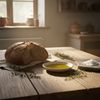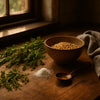Stainless Steel Tongs: Essential Guide to Heat-Safe Tools
Every kitchen needs a reliable pair of hands—and that's exactly what stainless steel tongs deliver. Whether you're flipping steaks on the grill, tossing pasta in a hot pan, or plating your latest culinary masterpiece, these versatile tools are your secret weapon for precision and control.
Key Takeaways
- Stainless steel tongs provide reliable handling for various cooking tasks.
- They are essential for flipping, tossing, and plating food with precision.
- These tools offer excellent control in both grilling and stovetop cooking.
- Having a quality pair of stainless steel tongs enhances kitchen efficiency.
Table of Contents
- Why Stainless Steel Dominates the Kitchen
- Types and Designs of Stainless Steel Kitchen Tongs
- Key Features That Make or Break Your Tongs
- How to Choose the Right Stainless Steel Tongs for Your Kitchen
- Maintenance and Care for Long-Lasting Performance
- Professional Insights and Expert Recommendations
- Conclusion: An Investment in Kitchen Success
But here's the thing: not all tongs are created equal. While plastic versions might melt under pressure and silicone tips can wear down over time, stainless steel tongs offer unmatched durability and heat resistance that serious home cooks demand. They're the workhorses of professional kitchens—and for good reason.
Professional kitchen tongs made from stainless steel can withstand temperatures up to 600°F without warping, melting, or compromising their grip—making them essential for high-heat cooking techniques.
Quick Answer
Stainless steel tongs are heat-resistant kitchen tools with metal gripping ends that excel at turning, lifting, and serving food. They're ideal for grilling, sautéing, and any high-temperature cooking where durability and precision matter most. Unlike plastic or silicone alternatives, they won't melt or degrade, making them the preferred choice for professional chefs and serious home cooks.
Why Stainless Steel Dominates the Kitchen
When you're working with sizzling pans and open flames, material matters. Stainless steel tongs for cooking offer three game-changing advantages that put them ahead of the competition:
Heat resistance is where stainless steel truly shines. While nylon tongs start to soften around 400°F and plastic versions can melt at even lower temperatures, quality stainless steel maintains its integrity well beyond typical cooking temperatures. This means you can confidently grab that perfectly seared steak straight from a screaming-hot cast iron pan.
Durability is the second superpower. A well-made pair of stainless steel tongs can last decades with proper care. They resist corrosion, won't chip like ceramic-tipped versions, and maintain their spring tension through thousands of uses. It's an investment that pays dividends in reliability.
Precision rounds out the trifecta. The rigid construction of stainless steel allows for exact control when handling delicate items or heavy cuts of meat. You get the tactile feedback that helps you gauge doneness and manipulate food with confidence.
Pros
- Exceptional heat resistance up to 600°F+
- Long-lasting durability with proper care
- Superior grip strength for heavy items
- Easy to clean and dishwasher safe
- Professional-grade precision and control
Cons
- Can scratch non-stick cookware surfaces
- Conducts heat (handles can get warm)
- Heavier than plastic alternatives
- May require more careful storage
The beauty of professional kitchen tongs lies in their versatility. From the delicate task of arranging garnishes to the brute force needed for flipping a whole fish, stainless steel adapts to whatever your culinary creativity demands.
Types and Designs of Stainless Steel Kitchen Tongs

Not all stainless steel tongs are built the same. Understanding the different types helps you choose the right tool for your cooking style and specific kitchen tasks.
Utility Tongs - Your Everyday Workhorses
These are the Swiss Army knives of the tong world. Professional kitchen tongs in the utility category typically feature scalloped or slightly serrated tips that provide excellent grip without being too aggressive on delicate foods. They're usually 9-12 inches long—perfect for most stovetop cooking.
What makes utility tongs special? Their versatility. You can flip bacon, toss salads, grab pasta from boiling water, or turn chicken breasts with equal confidence. The moderate length keeps your hands safely away from heat while maintaining precise control.
BBQ and Grilling Tongs - The Heat Heroes
When you're working over open flames or high-heat grilling, standard tongs just won't cut it. BBQ stainless steel tongs for cooking stretch 12-16 inches or longer, putting serious distance between your hands and the heat source.
These heavy-duty versions often feature more aggressive gripping surfaces—think deeper serrations or pronounced scallops—to handle thick steaks, whole fish, or corn on the cob without losing your grip. Many include locking mechanisms that are easy to operate with one hand, even while wearing heat-resistant gloves.
Serving and Presentation Tongs
Shorter and often more decorative, serving tongs prioritize elegance and gentle handling. They're typically 6-9 inches long with wider, spoon-like tips that won't damage delicate items like pastries or leafy greens.
These tongs shine at dinner parties, buffets, or when you're plating dishes that need a professional presentation. The refined appearance makes them suitable for table-side service.
Pro tip: Look for tongs with different tip styles—flat ends for delicate items, scalloped for general use, and serrated for secure gripping of slippery foods.
Specialty and Precision Tongs
For the detail-oriented cook, precision tongs offer tweezers-like control. These slim, often shorter tools excel at plating garnishes, handling small items, or any task requiring surgical precision.
Some specialty designs include offset angles for better leverage, extra-wide tips for handling large items, or even built-in thermometer holders for checking doneness while gripping.
Key Features That Make or Break Your Tongs
The difference between frustrating and fantastic tongs often comes down to these crucial design elements:
Material Quality and Construction
Not all stainless steel is created equal. Look for 18/10 stainless steel—the numbers indicate chromium and nickel content, which directly impact corrosion resistance and durability. This grade offers the best balance of strength, rust resistance, and food safety.
One-piece construction eliminates joints where bacteria can hide, making them easier to sanitize—a key reason why professional kitchen tongs often feature seamless designs.
Locking Mechanisms and Storage
A good locking system should be intuitive and operable with one hand. The most common types include:
- Pull-ring locks: Simple and reliable, but can be tricky with wet hands
- Slide locks: Easy to operate but may loosen over time
- Gravity locks: Automatic locking when lifted, convenient but not always secure
- Springless designs: No locking needed, preferred by many professional chefs
Storage hooks or hanging holes might seem minor, but they're game-changers for kitchen organization and proper drying.
Handle Length and Ergonomics
Handle length isn't just about reach—it's about leverage and control. Shorter handles (6-9 inches) offer more precision but less heat protection. Longer handles (12+ inches) keep you safer from heat but can feel unwieldy for delicate tasks.
The sweet spot for most home cooks? A 10-12 inch pair for general use, with a longer pair reserved for grilling. Ergonomic features like textured grips or contoured handles reduce hand fatigue during extended cooking sessions.
Quality stainless steel tongs for cooking should feel balanced in your hand, with enough spring tension to stay closed when relaxed but easy to open when needed. The best tongs become an extension of your hands—responsive, reliable, and ready for whatever your culinary creativity demands.
How to Choose the Right Stainless Steel Tongs for Your Kitchen

With so many options available, selecting the perfect stainless steel tongs comes down to matching the tool to your cooking style and specific needs. Here's how to make the right choice:
Assess Your Cooking Style
Frequent grillers need long-handled, heavy-duty tongs that can handle high heat and provide safe distance from flames. If you're primarily cooking indoors, a versatile 10-12 inch pair will handle most tasks from sautéing to serving.
Consider how often you entertain. Regular hosts benefit from having both utility tongs for cooking and elegant serving tongs for presentation. Professional kitchen tongs often come in sets that cover multiple scenarios.
Length Matters: Safety vs. Control
The sweet spot for most home cooks is 10-12 inches for general cooking, with a longer 14-16 inch pair for grilling. Shorter tongs offer more precision but less heat protection, while longer ones provide safety at the cost of some maneuverability.
Industry experts recommend having at least two pairs: one medium-length for everyday cooking and one long-handled for high-heat applications.
Material Grade and Construction Quality
Look for 18/10 stainless steel construction—this grade offers superior corrosion resistance and durability. One-piece designs eliminate bacterial hiding spots and are easier to sanitize, making them the preferred choice in professional kitchens.
Avoid tongs with plastic components in high-heat areas, as they can melt or warp. The best stainless steel tongs for cooking feature all-metal construction with ergonomic handles that stay cool during use.
Maintenance and Care for Long-Lasting Performance
Proper care ensures your stainless steel tongs remain reliable kitchen companions for years. While most are dishwasher safe, hand washing extends their lifespan and prevents potential damage from harsh detergents.
Cleaning Best Practices
Wash immediately after use to prevent food residue from hardening. For stubborn bits, soak in warm soapy water before scrubbing. Avoid abrasive cleaners that can scratch the surface and create bacterial hiding spots.
Dry thoroughly after washing to prevent water spots and potential rust formation. Store in a dry location, preferably hanging to allow air circulation around all surfaces.
Preventing Common Issues
Locking mechanisms can become sticky over time. Regular cleaning around the pivot point and occasional lubrication with food-safe oil keeps them operating smoothly. If your tongs lose their spring tension, it's usually time for replacement rather than repair.
Pros
- Exceptional heat resistance for all cooking methods
- Durable construction that lasts for years
- Easy to clean and sanitize
- Precise control for delicate and heavy foods
- Dishwasher safe for convenience
Cons
- Can scratch non-stick surfaces if not careful
- May conduct heat with prolonged exposure
- Heavier than plastic alternatives
- Higher initial cost than basic options
Professional Insights and Expert Recommendations

Based on our testing and feedback from professional chefs, professional kitchen tongs consistently outperform consumer-grade alternatives in durability and performance. The investment in quality stainless steel pays dividends in reliability and food safety.
Restaurant kitchens often use springless designs that eliminate potential failure points, while home cooks typically prefer locking mechanisms for storage convenience. Both approaches have merit—choose based on your usage patterns and storage preferences.
The best tongs feel like an extension of your hands. When you find the right pair, cooking becomes more intuitive and enjoyable.
Conclusion: An Investment in Kitchen Success
Quality stainless steel tongs represent one of the best investments you can make in your kitchen arsenal. Their combination of heat resistance, durability, and versatility makes them indispensable for everything from everyday cooking to special occasion entertaining.
Whether you're flipping delicate fish fillets, turning thick steaks on the grill, or serving a beautiful salad, the right pair of stainless steel tongs for cooking provides the control and confidence every home chef needs. Choose wisely, care for them properly, and they'll serve you reliably for years to come.
Remember: great cooking isn't just about recipes—it's about having tools that perform when it matters most. With the right stainless steel tongs in your kitchen, you're equipped to handle whatever culinary challenge comes your way.
Frequently Asked Questions
Are stainless steel tongs good?
Absolutely, stainless steel tongs are a kitchen workhorse. They’re durable, resistant to rust and corrosion, and can handle high heat without warping—perfect for everything from searing steaks to tossing salads. Their sturdy grip and easy maintenance make them a reliable choice for both home chefs and pros alike.
What is the best material for tongs?
The best tongs strike a balance between heat resistance, durability, and food safety. Stainless steel paired with silicone tips often takes the crown because the steel provides strength and longevity, while the silicone offers a non-stick, gentle touch that won’t damage cookware or food. Plus, quality silicone is chemical-free, so you can cook confidently and cleanly.
What do chefs use instead of tongs?
While tongs are a staple, chefs sometimes reach for other tools depending on the task—think fish spatulas for delicate flips, wooden spoons for stirring, or even their hands for quick, precise plating. But when it comes to grabbing, flipping, or serving, nothing quite replaces the control and versatility of a well-made pair of tongs.
Why do chefs prefer stainless steel?
Chefs favor stainless steel because it’s tough, hygienic, and heat-tolerant. It won’t absorb flavors or odors, resists staining, and can handle the intense heat of professional kitchens without bending or melting. Plus, stainless steel tools have a sleek, professional look that signals reliability and quality every time they hit the prep station.
What tongs do professional chefs use?
Professional chefs typically choose stainless steel tongs with precision-engineered grips and heat-resistant tips—often silicone—to combine durability with versatility. These tongs offer a strong hold on everything from slippery seafood to hearty grilled veggies, and their construction ensures they stand up to the rigors of daily kitchen life while keeping food safe and cookware pristine.




